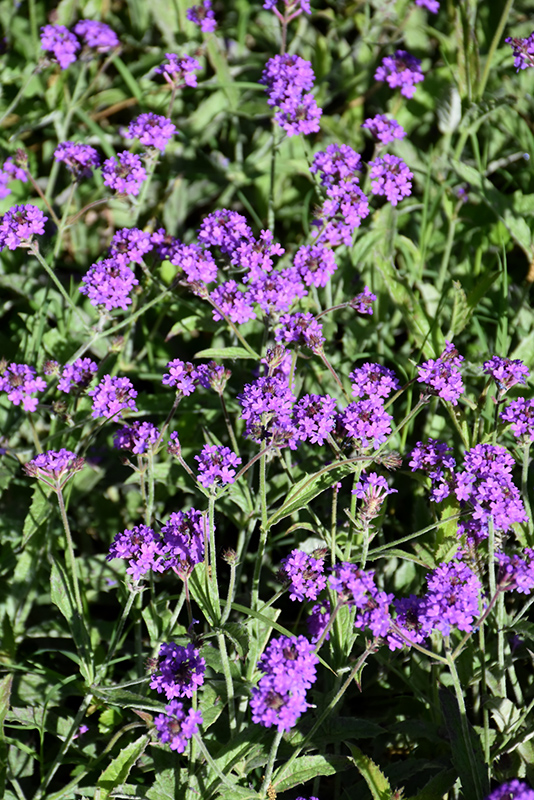Plant Height: 18 inches
Flower Height: 24 inches
Spread: 3 feet
Sunlight:
![]()
Hardiness Zone: (annual)
Other Names: Rigid Verbena, Slender Vervain, Sandpaper Verbena
Description:
This variety is a vigorous spreader producing volumes of purple flowers with a hint of lavender; very impressive when massed; stems and leaves tend to be rigid and upright; a bright color accent in the garden or containers
Ornamental Features
Purple Verbena is smothered in stunning clusters of fragrant purple flowers with lavender overtones at the ends of the stems from mid spring to mid fall. Its serrated narrow leaves remain green in color throughout the year.
Landscape Attributes
Purple Verbena is a dense herbaceous annual with a mounded form. It brings an extremely fine and delicate texture to the garden composition and should be used to full effect.
This plant will require occasional maintenance and upkeep, and should be cut back in late fall in preparation for winter. It is a good choice for attracting butterflies and hummingbirds to your yard, but is not particularly attractive to deer who tend to leave it alone in favor of tastier treats. Gardeners should be aware of the following characteristic(s) that may warrant special consideration;
- Spreading
- Suckering
Purple Verbena is recommended for the following landscape applications;
- Mass Planting
- General Garden Use
- Groundcover
- Naturalizing And Woodland Gardens
Planting & Growing
Purple Verbena will grow to be about 18 inches tall at maturity extending to 24 inches tall with the flowers, with a spread of 3 feet. Its foliage tends to remain dense right to the ground, not requiring facer plants in front. Although it's not a true annual, this fast-growing plant can be expected to behave as an annual in our climate if left outdoors over the winter, usually needing replacement the following year. As such, gardeners should take into consideration that it will perform differently than it would in its native habitat.
This plant should only be grown in full sunlight. It is very adaptable to both dry and moist locations, and should do just fine under typical garden conditions. It may require supplemental watering during periods of drought or extended heat. It is not particular as to soil type or pH. It is somewhat tolerant of urban pollution, and will benefit from being planted in a relatively sheltered location. Consider applying a thick mulch around the root zone in winter to protect it in exposed locations or colder microclimates. This species is not originally from North America. It can be propagated by division.

